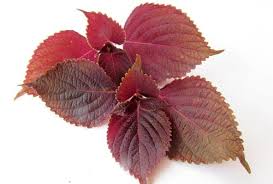Crispy Fried Spring Rolls: A Delicacy That Delights the Senses

Crispy fried spring rolls, or “Chả Giò Chiên Giòn” as it is known in Vietnam, are a beloved dish that has earned its place in the hearts and stomachs of food lovers across the globe. Whether as a side dish, appetizer, or even a main course, these crispy, golden-brown rolls are filled with savory, well-seasoned ingredients, making each bite a delightful experience.
The combination of a crunchy exterior and flavorful fillings, such as seasoned pork, shrimp, vegetables, or even tofu, offers a delightful contrast that excites the taste buds. Often accompanied by dipping sauces like fish sauce or hoisin, crispy fried spring rolls offer a perfect balance of texture, flavor, and aroma. But what makes these spring rolls so special? How are they prepared, and what can you expect when you bite into one? Let’s delve into the world of Chả Giò Chiên Giòn.
The History and Origin of Chả Giò Chiên Giòn
The history of Chả Giò Chiên Giòn is deeply rooted in the culinary traditions of Vietnam, with influences from Chinese and other Southeast Asian cuisines. The concept of spring rolls dates back to ancient China, where they were traditionally filled with vegetables and eaten during the Lunar New Year as a symbol of prosperity. These rolls made their way into Vietnamese cuisine over centuries, evolving into a dish loved by many across the country.
Vietnamese spring rolls are known for their unique fillings and are typically wrapped in rice paper before being deep-fried. The crispy texture of the golden-brown exterior is achieved through the high-heat frying process, making each bite a satisfying crunch. Over time, the fillings of Chả Giò Chiên Giòn have expanded beyond traditional pork and shrimp to include a variety of meats, vegetables, and even tofu for a vegetarian option.
While these spring rolls are a common snack in Vietnam, they have become a popular appetizer worldwide, especially in Vietnamese restaurants. The dish goes by several names, including “Nem Rán” in the North of Vietnam, but the love for these crispy treats transcends regional names, as they are universally appreciated for their delightful combination of flavors.
The Essential Ingredients of Chả Giò Chiên Giòn
The beauty of Chả Giò Chiên Giòn lies in the harmony of its ingredients. Here’s a breakdown of the key components that make up these golden delights:
- Rice Paper Wrappers: Rice paper, also known as bánh tráng, is used as the outer shell of the spring rolls. When dipped in warm water, the rice paper becomes soft and pliable, making it easy to roll up the filling. When fried, it transforms into a crispy, delicate texture that contrasts beautifully with the fillings inside.
- Pork: Ground pork is one of the most popular choices for the filling of Chả Giò Chiên Giòn. It provides a savory, juicy base for the other ingredients. The pork is often seasoned with fish sauce, garlic, and black pepper to enhance its flavor.
- Shrimp: For seafood lovers, shrimp is a delicious addition to the filling. Shrimp adds a delicate sweetness and texture that complements the richness of the pork. Sometimes, the shrimp is chopped into small pieces and mixed with the other ingredients.
- Glass Noodles: Glass noodles, also known as cellophane noodles or “bánh canh,” are often used to add bulk and texture to the filling. They are chewy and absorb the flavors of the seasoning, making them a key ingredient in Chả Giò Chiên Giòn.
- Vegetables: Carrots, mushrooms, onions, and cabbage are common vegetables used in spring roll fillings. These vegetables add a crunchy texture and a fresh, vibrant contrast to the richness of the meat and shrimp. Additionally, the vegetables help balance out the overall flavor profile of the rolls.
- Herbs and Spices: Garlic, shallots, fish sauce, soy sauce, and black pepper are used to season the filling, creating a depth of flavor that permeates the entire roll. Fresh herbs such as cilantro or Thai basil may also be included in the filling to enhance the aromatic profile.
- Egg: A beaten egg is sometimes added to the filling to help bind the ingredients together, ensuring that the filling stays intact when rolled and fried.
- Dipping Sauce: The accompanying dipping sauce is a crucial component of Chả Giò Chiên Giòn. The most common sauce is fish sauce-based, flavored with garlic, sugar, lime, and chili to create a balance of salty, sweet, sour, and spicy flavors. Hoisin sauce is also used in some variations for a richer, sweeter taste.
Step-by-Step Guide to Making Chả Giò Chiên Giòn
While making Chả Giò Chiên Giòn may seem complex, with practice, it becomes an easy and enjoyable dish to prepare. Below is a step-by-step guide to making these crispy delights at home.
1. Prepare the Filling
Start by preparing the filling ingredients. Begin by cooking the ground pork in a pan over medium heat, adding a little oil and stirring until the pork is cooked through. Once the pork is browned, add the chopped shrimp and cook for an additional 2-3 minutes.
Next, add the vegetables. If you’re using carrots, onions, and cabbage, finely shred or julienne them. Mushrooms should be chopped into small pieces. Add these vegetables to the pork and shrimp mixture and stir-fry until softened. Add the glass noodles to the mixture and cook for a further 2 minutes to allow them to absorb the flavors. Season with fish sauce, soy sauce, black pepper, and a pinch of sugar to taste.
Once the filling is cooked, set it aside to cool completely. This step is crucial because using hot filling can cause the rice paper to become soggy, making it difficult to roll.
2. Soak the Rice Paper
Fill a shallow dish with warm water. One by one, dip each rice paper into the water for about 5-10 seconds or until it softens and becomes pliable. Be careful not to soak it for too long, as this can make the paper too fragile and difficult to work with. Lay the softened rice paper on a clean, flat surface.
3. Assemble the Spring Rolls
Place a spoonful of the cooled filling onto the center of the rice paper. Fold in the sides of the rice paper and then roll it up tightly, ensuring the filling is securely wrapped. Repeat the process with the remaining rice papers and filling.
4. Fry the Spring Rolls
Heat vegetable oil in a large pan or wok over medium-high heat. There should be enough oil to submerge the spring rolls partially. Once the oil is hot, carefully add the rolls to the pan, being careful not to overcrowd them. Fry the rolls for 4-5 minutes, turning occasionally, until they are golden brown and crispy on all sides.
Remove the spring rolls from the oil and drain them on paper towels to remove excess oil.
5. Prepare the Dipping Sauce
While the spring rolls are frying, prepare the dipping sauce by combining fish sauce, sugar, lime juice, garlic, and chili in a small bowl. Adjust the seasoning to your taste, adding more sugar for sweetness or more lime for acidity. Garnish the sauce with fresh chili slices or herbs if desired.
6. Serve the Chả Giò Chiên Giòn
Once the spring rolls are crispy and golden, transfer them to a serving plate and serve immediately with the dipping sauce on the side. They are best enjoyed while hot and crispy, as the texture can soften if they sit for too long.
Variations of Chả Giò Chiên Giòn
While the traditional filling for Chả Giò Chiên Giòn typically includes pork and shrimp, there are many variations of this dish, depending on personal preferences or dietary restrictions. Some of the most popular variations include:
- Vegetarian Spring Rolls: For a vegetarian version, you can replace the pork and shrimp with mushrooms, tofu, and more vegetables like bean sprouts and spinach. Season the filling with soy sauce and herbs to create a savory, satisfying option without meat.
- Beef Spring Rolls: Some variations use ground beef instead of pork for a richer, heartier flavor. The beef is often seasoned with garlic, soy sauce, and ginger for a distinct taste.
- Crispy Sweet Potato Rolls: In certain regions, sweet potatoes are added to the filling for a slightly sweet and creamy texture. This variation can be combined with pork or served as a vegetarian option.
- Fish Spring Rolls: For a seafood twist, fish fillets such as catfish or tilapia can be used in place of pork or shrimp. This variation offers a lighter, fresher alternative to the traditional filling.
Serving Suggestions
Crispy fried spring rolls are incredibly versatile and can be served in many different ways. Here are some ideas for incorporating them into your meal:
- With Rice: Serve the spring rolls alongside steamed rice, either as a standalone dish or as part of a larger meal.
- With Noodles: Pair the spring rolls with noodle dishes, such as pho or vermicelli, for a complete meal.
- As Part of a Vietnamese Feast: Serve the spring rolls as part of a larger Vietnamese feast, accompanied by dishes such as bánh xèo (Vietnamese pancakes), gỏi cuốn (fresh spring rolls), and grilled meats.
- As an Appetizer: Crispy fried spring rolls make a perfect appetizer for a casual dinner or a party. Pair them with a variety of dipping sauces, such as hoisin or sweet chili sauce.
Nutritional Benefits of Chả Giò Chiên Giòn
While crispy fried spring rolls are undeniably delicious, they are also relatively high in calories due to the deep-frying process. However, they can be a part of a balanced diet if enjoyed in moderation. Some of the nutritional benefits of the ingredients include:
- Protein: The pork, shrimp, and any other protein-rich fillings provide essential amino acids necessary for muscle growth and repair.
- Vitamins and Minerals: The vegetables in the filling provide important vitamins like vitamin C and beta-carotene, which support immune health and protect the body from oxidative stress.
- Healthy Fats: While fried, the oil used in cooking can provide some healthy fats if you use oils rich in unsaturated fats, like vegetable or olive oil.
Conclusion
Crispy fried spring rolls (Chả Giò Chiên Giòn) are a delectable treat that combines savory fillings, a crunchy exterior, and a flavorful dipping sauce to create a satisfying culinary experience. Whether you enjoy them as an appetizer, snack, or main course, these golden delights are a testament to the rich flavors of Vietnamese cuisine. With endless variations and customizable fillings, Chả Giò Chiên Giòn offers a versatile and indulgent dish that is sure to be a hit at any table.

